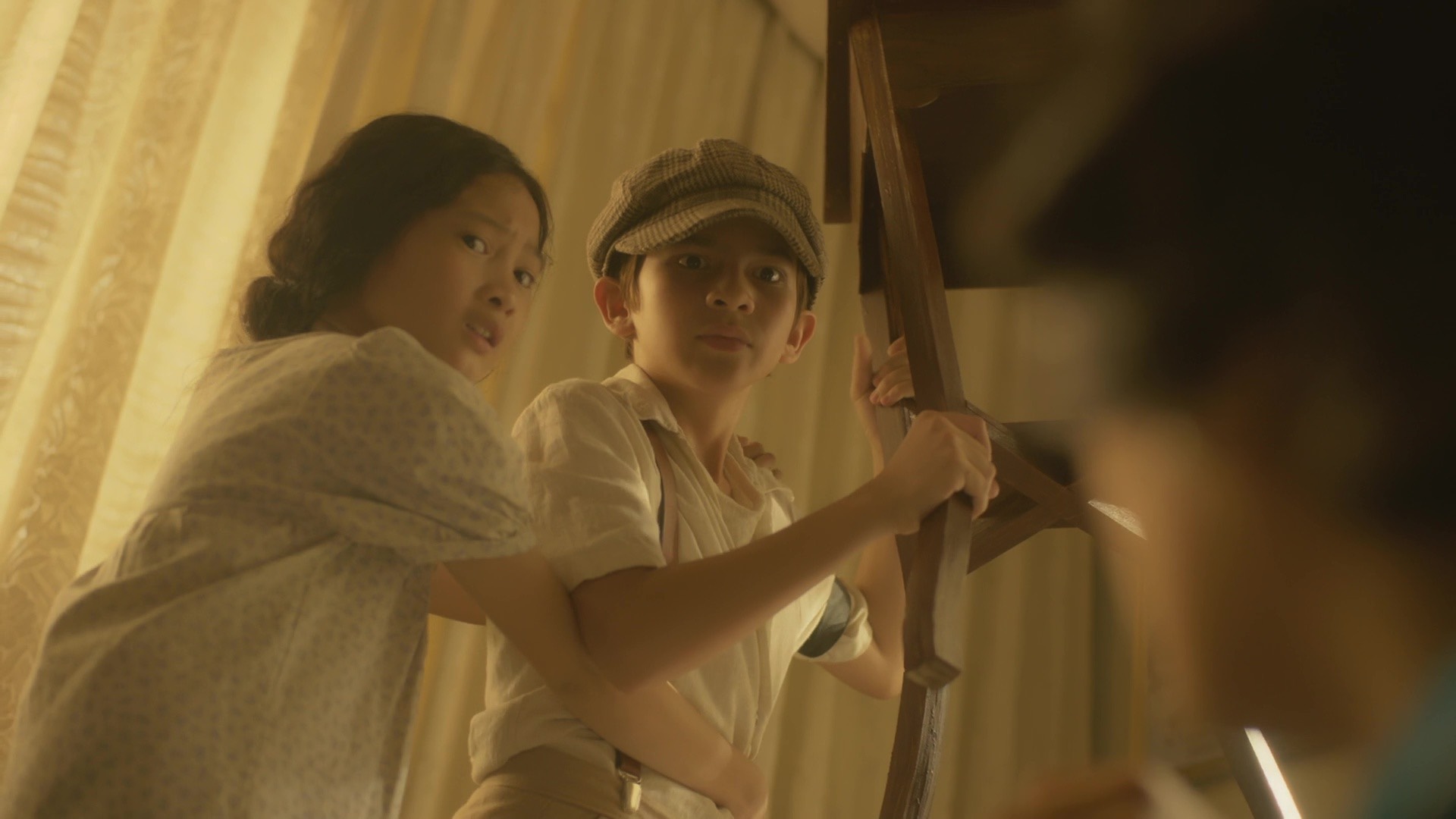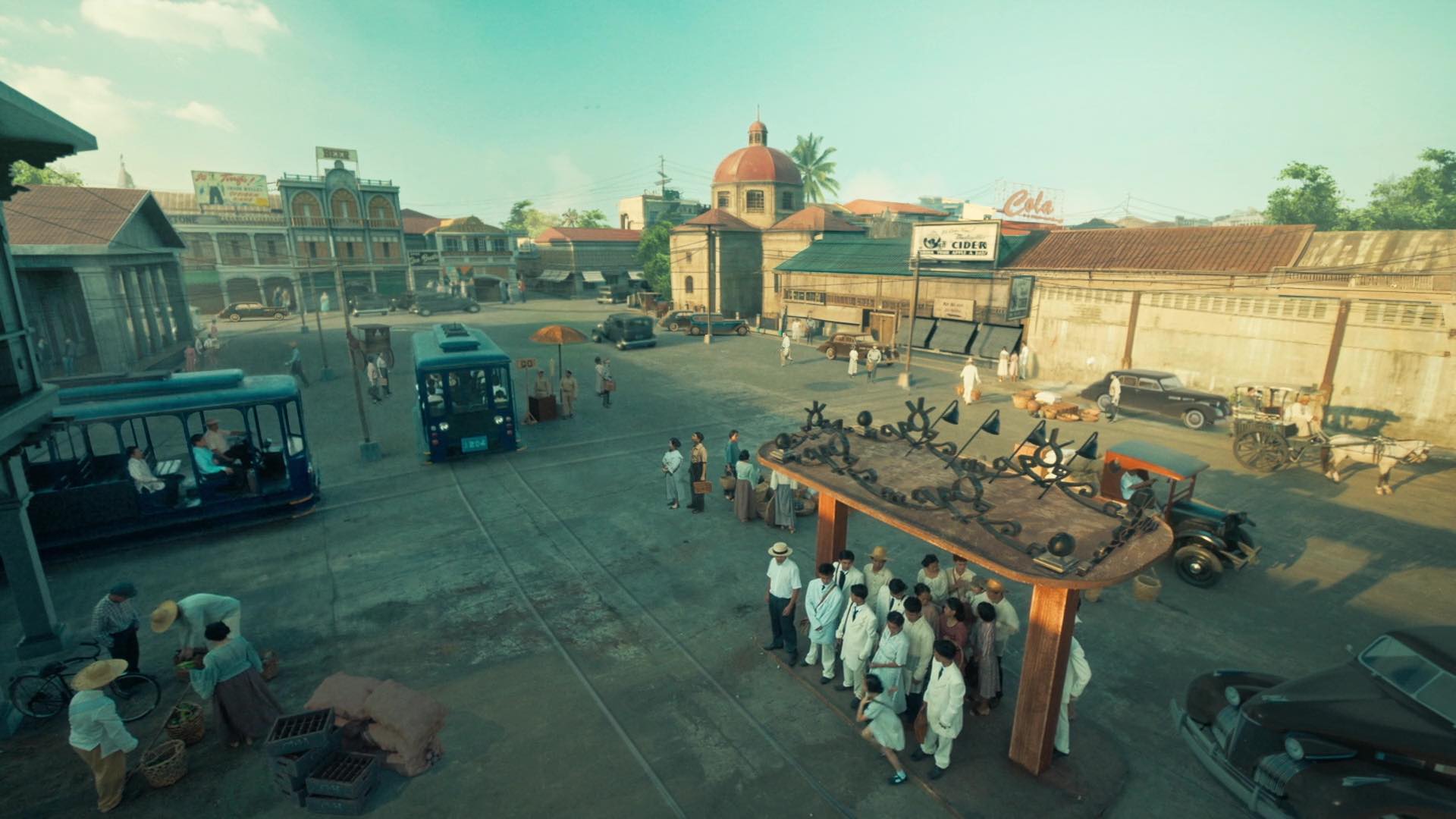REVIEW: World War II and drama converge in 'Pulang Araw'
Following the success of Maria Clara at Ibarra, GMA’s latest foray into historical drama has arrived in the form of Pulang Araw, the story of four friends living through the Japanese occupation of the Philippines in World War II. While the former was hailed for its wit and rom-com format, the latter has been positioned as a prestige television drama event, premiering on Netflix a full three days before making its GMA bow on July 29. Since then, the series has quickly become a hit show in the country, ranking first in the Top 10 TV shows available on the streaming platform.
Having seen the first seven episodes, it’s easy to see why, as the handsome production design, costumes, and visual presentation go a long way towards immersing the viewer in this critical time of Philippine history. At the same time, the talented cast is immensely appealing, with the leads being portrayed by GMA mainstays Barbie Forteza (Happy Together), Alden Richards (Hello, Love, Goodbye), Sanya Lopez (Encantadia Chronicles: Sang'gre), and David Licauco (Maging Sino Ka Man). The initial arc, set ten years before the Japanese invasion, also includes the likes of Epy Quizon (GomBurZa) and Angelu de Leon (Di Na Muli) in key roles.
In the initial arc, we move between war-torn 1943, when Eduardo (Richards) is a hardened resistance fighter against the Japanese, and 1931, when he and his half-sister, Adelina, lost their mother (Rhian Ramos, Royal Blood) to the kind of tuberculosis that’s only contagious when the sufferer doesn’t have a monologue. Soon after, Adelina is made to live with her biological father, Julio (Quizon), to the chagrin of her now-stepmother, Carmela (de Leon). Through the kindness and tenacity of young Eduardo, Adelina’s now-stepsister Teresita (Cheska Maranan, later Lopez), and a Japanese neighbor, Hiroshi (Miguel Diokno, later Licauco), the young girl is able to survive, forging bonds that will last into adulthood.
Quizon puts in a winning turn as Julio, a man forced to contend with the literal embodiment of his dalliances. Under director Daryl Zapata (My Husband’s Lover), Quizon’s disgraced showman wins the audience over, transforming an initially distasteful character into the show’s emotional center (at this point). There is a moment, when he pulls on his tap shoes for one last performance, that was as heartbreaking as it was moving, and Quizon nails it. Cassy Lavarias, as the young Adelina, keeps pace with Quizon, turning in a performance that exudes sincerity without being cloying or overly theatrical.

The same can’t be said of De Leon as Julio’s scorned wife, Carmela, whose entire role adheres so strictly to the Evil Stepmom playbook that every scene she can be turned into an Evil Stepmom drinking game: Does she place Adelina into servitude? Take a shot. Does she slap her kid Teresita for siding with Adelina? Take another shot. By the time Carmela calls Adelina a bastard for the nth time, you’ll be plastered. And that’s excluding scenes of Carmela bitterly stubbing out cigarettes on balconies (in a cigarette holder, naturally), seething on the edge of the frame, or colluding with sketchy characters to emasculate her husband.
It’s a shame that Pulang Araw’s creators felt the need to build their show’s foundation on tired telenovela tropes, as one would imagine the period setting alone to be ripe for any number of dramatic storylines. Any pathos invoked by the historical backdrop is nullified by the (approximately) eight millionth story of a cheating husband, his illegitimate child, separated siblings, and fulfilling the dreams of long-dead parents in a manner that rewards positive values and faith. It’s all stuff that we’ve seen before, to the point that begging for originality has grown tiresome.
Of course, with only the first seven of an announced one hundred episodes having aired, there’s plenty of time yet for the writers to wow us. The 1943 section, in particular, seems the most promising, as press materials have revealed that Lopez’s Teresita becomes a comfort woman, while childhood friend Hiroshi’s (Licauco) imminent return as an imperial soldier could be equally provocative. At the same time, Eduardo’s journey as a resistance fighter, and how the optimistic Adelina would be affected by life under the Japanese are other narratives the show could explore.

The trailers take every chance to showcase Pulang Araw as an epic war story, and we definitely get glimpses of this in the 1943 scenes. Pre-War and WW2 Philippines aren’t time periods depicted on-screen all that often, so it’s certainly thrilling to see pristine Manila streets and cityscapes presented in their vintage heyday before the Japanese arrive.
What isn’t as thrilling is the over-processed look applied to flashbacks that make up the bulk of the first few episodes. The 1943 sequences are appropriately gritty, but flashbacks to Eduardo and Adelina’s childhood look like they were run through a sepia filter by way of cotton candy. The pseudo-whimsical treatment adds unnecessary artifice to cinematographer Roman Theodossis’ impressive cinematography, while the inconsistent application of CGI confounds as backgrounds change focus independently of overall shots. Of course, with Eduardo switching from being left-handed to right-handed between episodes as a child, before growing up into a left-handed adult, some leeway needs to be given for consistency.

Missteps aside, it's too early to know for sure what kind of show Pulang Araw will turn out to be, but one hopes that the showrunners will leverage the extraordinary historical backdrop they’ve laid out to develop compelling characters in memorable stories. It would be a waste if the remaining ninety-three episodes would be little more than a standard-issue telenovela in period cosplay.
Pulang Araw is streaming on Netflix and airing on GMA-7. Watch the trailer below.


